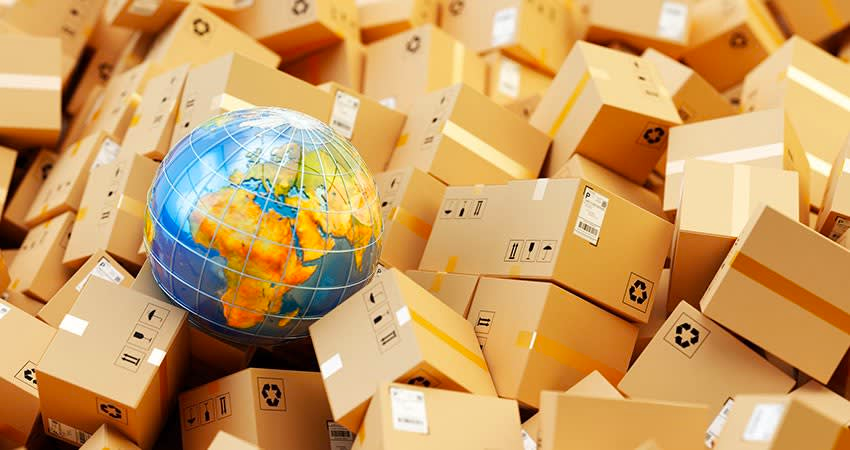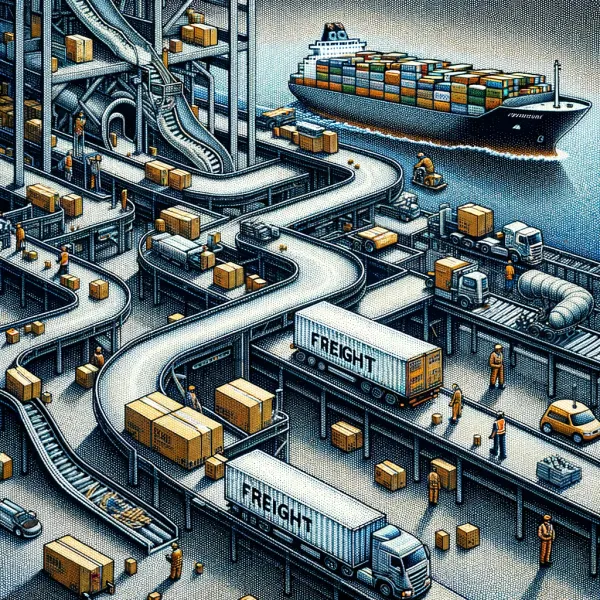
Looking At Parcel Packaging
Written by Kenneth Jones, 2019-04-02
In today’s eCommerce-fueled world, customers have come to expect a few key things from online retailers. Expectations such as fast and free shipping, competitive pricing, and no-hassle returns all go into the consumer decision-making process. Companies like Amazon are able to offer same-day shipping to their customers in almost any market because of highly streamlined supply chain systems that have taken years to build. These evolving logistics platforms are typically getting all the praise from the industry nowadays, but there is one other crucial aspect of the supply chain that most do not even think about, packaging. More specifically, the packaging that will be used within the last mile. A lot of care and planning goes into the last mile, as this is typically what customers think of when interacting with online retailers and is usually the costliest leg of the supply chain (accounting for 8–11% of total spend for higher-end products). They want their orders delivered on time, and in the exact condition they had envisioned. This is where innovations in packaging come into play, as it keeps products safe, and customers happy.
Packaging, and cardboard boxes in particular, have been relatively the same for the last 150 years. The vast majority of boxes are simply corrugated cardboard that can be folded into any desired form, and have clearly stood the test of time. With differing dimensions, virtually any product can be packaged in a cardboard box. However, just as the expectations for stronger supply chains has evolved over the last decade, so too, has the need for better packaging solutions. The industry as a whole is interested in finding more economical and environmentally-friendly options to get their products from point A to B in a secure and aesthetically pleasing fashion.
Environmental Impact
There are many companies who are trying to mitigate their impact on the environment. This has inspired companies to switch from PVC-based packaging to both compostable and biodegradable options, or find improved ways to eliminate waste altogether. Compostable options are able to be broken down, but only within controlled environments, whereas biodegradable packages are broken down in the environment on their own. Although both options are better for the environment than traditional packaging, biodegradable options guarantee less negative environmental impact, while compostable options require consumer buy-in. Reports suggest that recycling just one ton of biodegradable packaging can save nine cubic yards of landfill space, 700 gallons of water, and 46 gallons of oil. Considering that there are over 400 million tons tons of cardboard packaging used globally every year, it is easy to see why companies should be looking to more eco-friendly options. Recent improvements to the manufacturing process have allowed companies like, EcoEnclose, to create completely biodegradable packaging. This packaging is cheaper than PVC-based options, and is better for the environment. They not only have eliminated plastics from their packaging, but have also implemented the use of algae ink into their labeling. This new ink allows the materials to break down much more quickly than packaging with standard ink. Recycling and waste prevention does not just mean the outside of the box, however. Chicago-based startup, Hazel, is looking for innovative ways to minimize food waste in shipping. The company has designed a small sachet, about the size of a sugar packet, that cuts down on shrinkage and spoilage. The company has already partnered with the USDA, and is becoming a crucial aspect of delivering food in the last mile. With these options being both environmentally and economically friendly, companies are able to look at their carbon footprint when choosing their packaging for the last mile.
Batching And Consolidation
The type of packaging used is only one way to reduce the environmental impact of the industry. Smarter shipping techniques, such as the ways in which companies utilize batching and consolidation of packages, can greatly impact the environment. Services like “Amazon Day Shipping” or Shop2Ship’s package consolidation allow for items to be packed and shipped all in one day, rather than breaking orders into multiple boxes and shipments from the same company. This process allows the company to package large orders within one box, which significantly cuts down on the carbon footprint created by these companies. These smart shipping techniques are also budget-friendly for companies. One large order ships for less than three smaller orders, meaning that when possible companies should consolidate orders into one package. For example, shipping one 30 lb. package versus shipping two 15 lb. packages would result in a savings of 27%. Not only is this savings felt by the company, but it is also translated to the customer.
Actual Aesthetics
Although packaging in cardboard boxes may seem unoriginal, there are ever-changing ways to make packaging beneficial to companies. A Dutch bike company, VanMoof, has discovered an easy, yet effective way to keep their packages safe while in transit. The company found that simply printing an image of a TV on the side of the box helped drop shipping damages by 80%, as carriers believed the package were extremely fragile. Companies like Lumi can help shippers design their packages in this way, as they are able to construct packages with custom dimensions and images for any sized item. A company can order boxes with their logo, ads for their other products, or anything pertinent to the company’s needs. However, blatant advertisements on packaging are no longer the only option. Amazon is experimenting with their version of QR codes, called SmileCodes, on their packaging. When scanned with the camera app on the consumer’s phone, these SmileCodes will direct consumers to an advertised product on Amazon. Simply changing the aesthetics of packaging can drive sales and create brand awareness.
Overall, recent technology and innovative design within the packaging industry has given companies the ability to be environmentally and fiscally responsible, all while getting consumers the products they ordered in the most efficient way possible.


